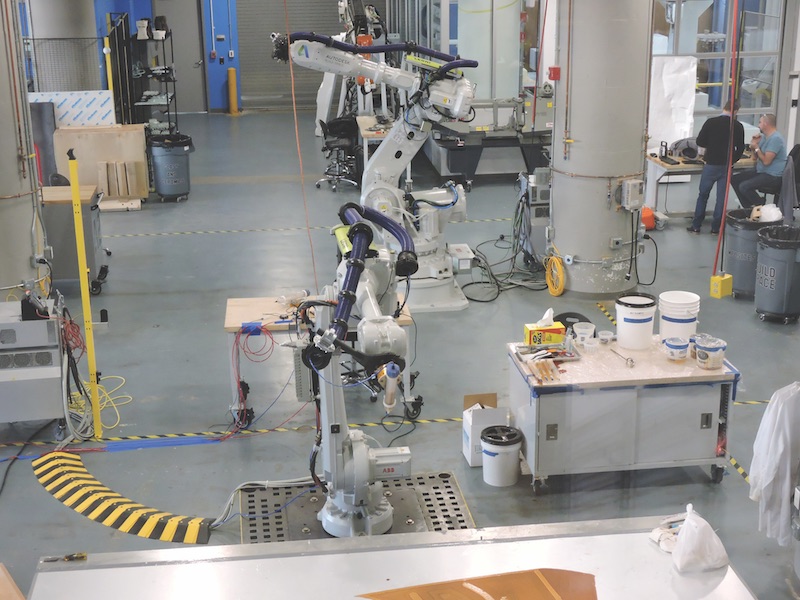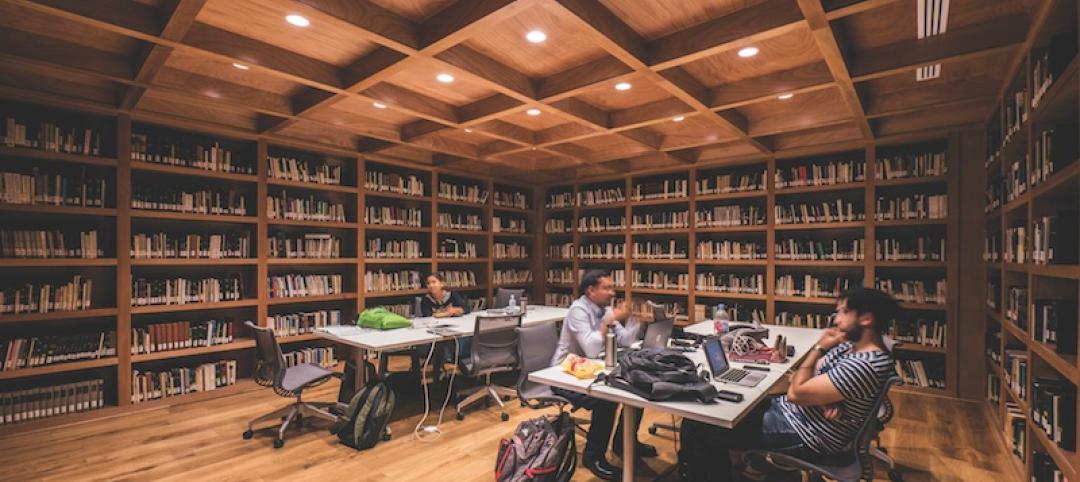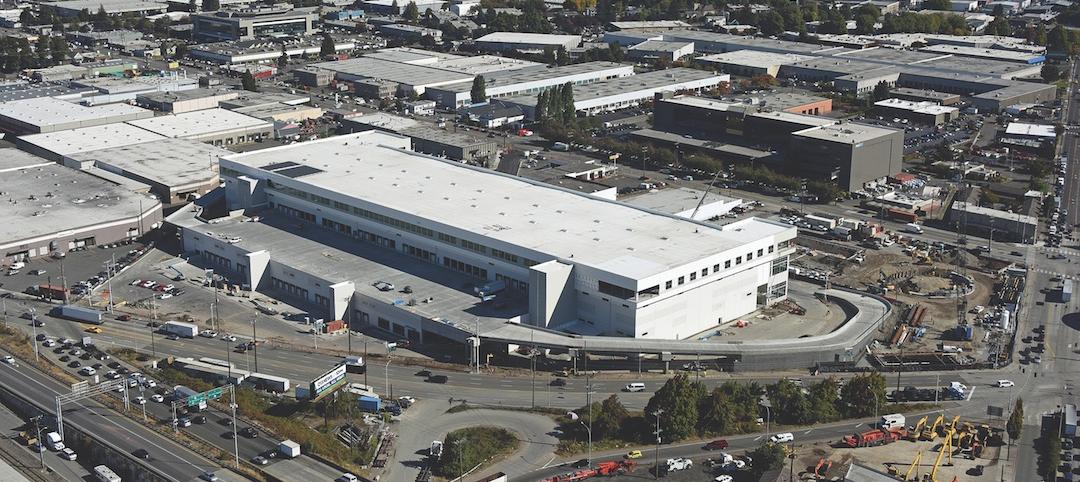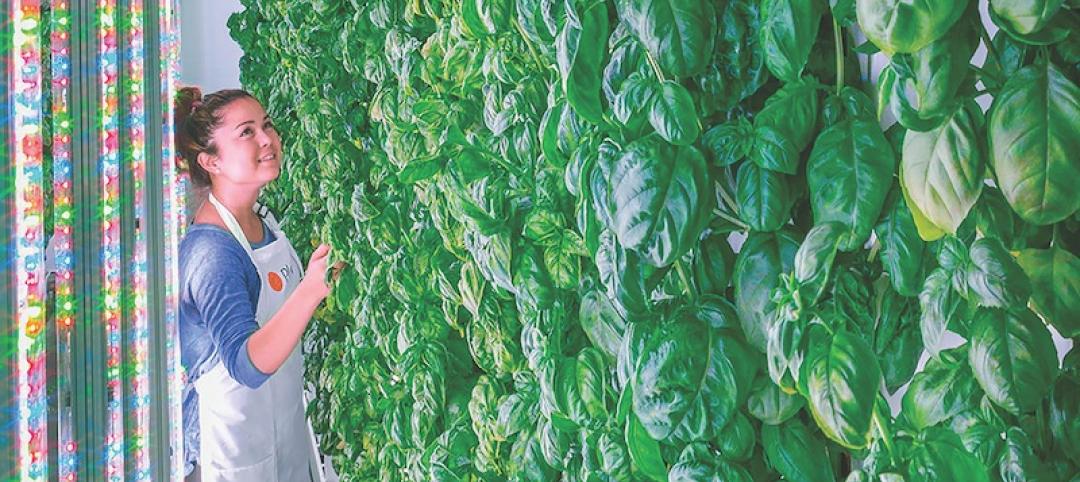Outside of universities, few of the maker spaces or incubators that have sprung up across the country are equipped with the heavy-duty machines that budding entrepreneurs need to experiment with fabrication.
Autodesk is trying to fill that void with its BUILD Space, a two-story, 34,000-sf workshop and innovation studio, which celebrated its one-year anniversary on October 5.
Located within Boston’s Innovation & Design Center, the SGA-designed BUILD Space—which stands for Building Innovation Learning Design—is offering companies free access to 60 workstations and more than $2 million worth of machinery that includes six robots, CNC mills, laser and water-jet cutters, and 3D printers. Teams also have free access to Autodesk’s software, although they are not required to use it.
It’s was a busy first year for the maker shop. The program has hosted teams from 75 organizations and more than 500 people. Richard Rundell, Autodesk’s Senior Director and Technology and Innovation Strategist, explains that his company launched BUILD Space in response to an industry expectation “that the data our software provides not only leads to creating drawings, but can be used to make things.”
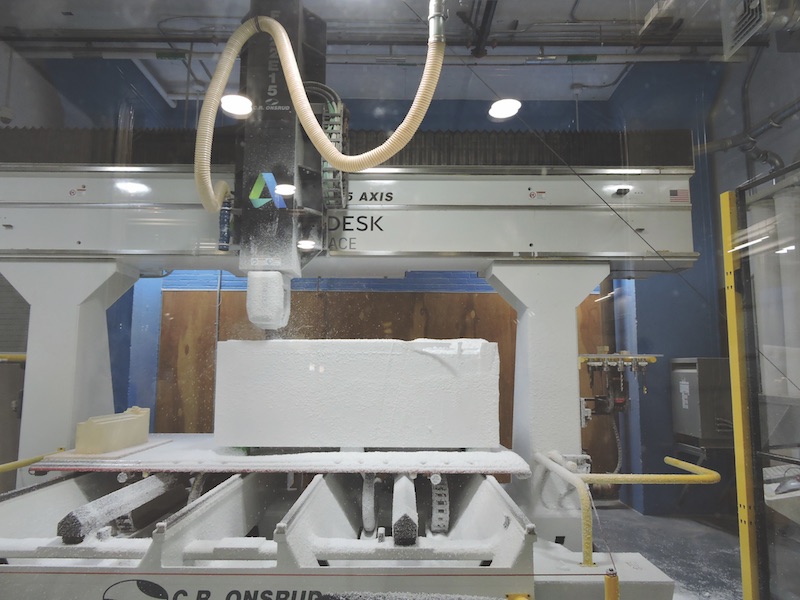
“BUILD supports the entire design-to-fabrication process,” says Andrew Tsay Jacobs, AIA, Director of Perkins+Will’s Building Technology Lab. Another big plus, says P+W’s Senior Project Architect James Giebelhausen, is having Autodesk’s staff on hand with working knowledge of the equipment and software.
Cost savings a major appeal
P+W has sent four teams to BUILD for various projects. One team experimented with fabricating a nail laminated timber (NLT) panel for a concept project in British Columbia. During the testing, the structural engineer on the project determined that the panel was too flexible, and should be stiffened by framing the wood.
Other P+W teams worked on creating lattices from a bio-based plastic called polycaprolactone, designing a modular mass timber high-rise tower that would be on a floating barge in the Chicago River, and developing an all-wood truss component (pictured on 35).
A team from construction and engineering giant Bechtel has been working at BUILD to create an artificial cloud (as in nimbus, not data storage) that would reduce ambient temperatures and provide much-needed shading for large construction sites in areas where extreme heat negatively impacts worker productivity.
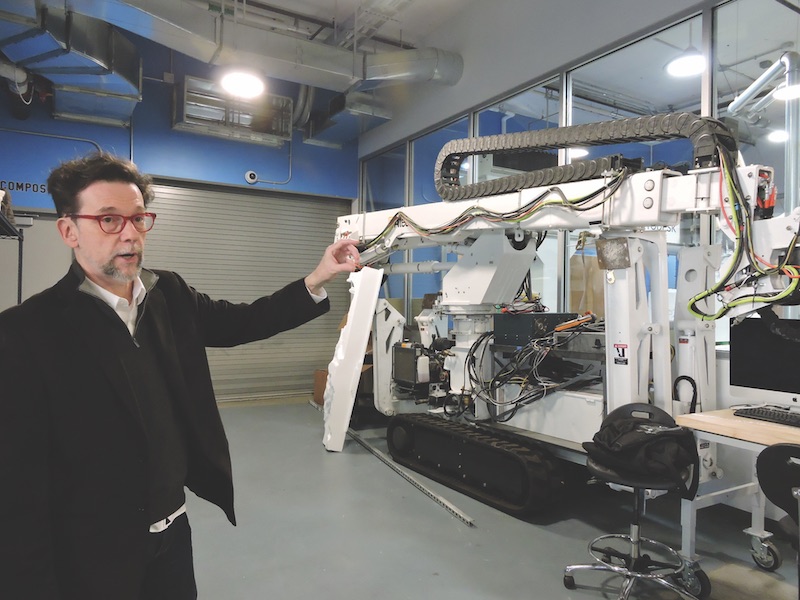 Autodesk’s 34,000-sf BUILD Space, a innovation workshop in Boston, offers free access to workbenches, fabrication machinery like robots and CNC routers, as well as free use of its fabrication software. The SGA-designed space, managed by Autodesk’s Senior Director and Technology and Innovation Strategist Richard Rundell (above), hosted 75 teams and 500 people in its first year of operations.
Autodesk’s 34,000-sf BUILD Space, a innovation workshop in Boston, offers free access to workbenches, fabrication machinery like robots and CNC routers, as well as free use of its fabrication software. The SGA-designed space, managed by Autodesk’s Senior Director and Technology and Innovation Strategist Richard Rundell (above), hosted 75 teams and 500 people in its first year of operations.
“There would have been significant cost for us to develop a space like this,” says Lakshmi Kallabuttu, Innovator in Residence in the Office of Bechtel’s Chief Innovation Officer. “Here, we can do a quick residency.”
Bechtel spent two months at BUILD working on the cloud project. Kallabuttu expected to have a pilot solution ready for field testing by the end of December 2017. An unexpected bonus, he says, has been the informal camaraderie and idea exchanges among the various teams working in the maker space.
Going beyond construction
BUILD Space isn’t confined to advancing construction-oriented projects. For example, one team is working with the Autodesk Foundation to explore ways to prevent neonatal jaundice.
A Boston-based startup, Lumii, has been using BUILD since the workshop opened to refine its method of converting 3D media content to holographic prints and light displays. New American Public Art (NAPA) is working on two 10-foot-tall Corian-and-metal interactive sculptures, called Kempelen’s Owls, which will be installed permanently in a public space in Austin, Texas, in 2018.
“Without BUILD Space, we would have had to make concessions in our design and fabrication,” says NAPA’s Co-founder Dan Beyer.
“The BUILD Space allows us to experiment with what’s next in digital fabrication, and to figure out what will be happening five, 10 years from now,” says Ben Uyeda, Founder and Director of HomeMade Modern, a five-year-old company that produces digital fabrication plans for homeowners to use to make things. Its most famous design is a spiral staircase, which Uyeda built in its Jamaica Plain loft using a CNC machine and $800 of plywood. Nearly 100 million people have viewed the YouTube video of that project.
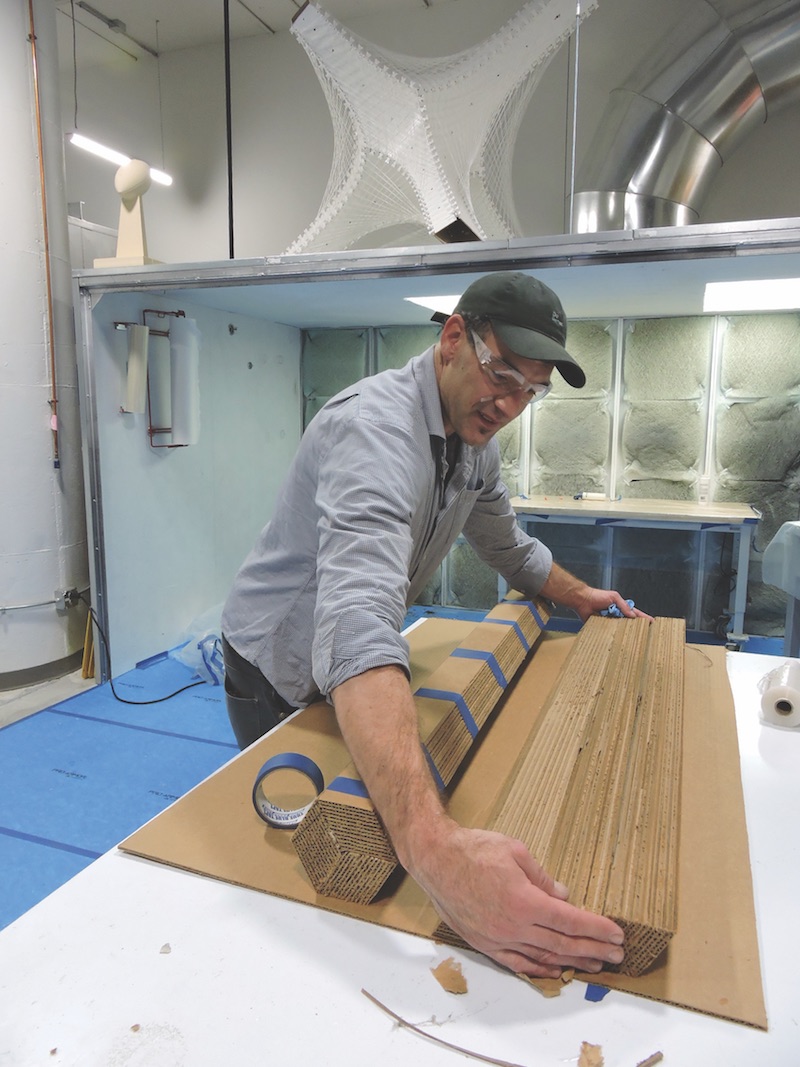 Among the teams using Autodesk’s BUILD Space is MetaComb, led by CEO Sev Tsodokov.
Among the teams using Autodesk’s BUILD Space is MetaComb, led by CEO Sev Tsodokov.
Uyeda says that what makes BUILD unlike other innovation spaces is that “its machinery is, by a factor of 10, more sophisticated.” His team is in the BUILD facility once a week, and has made great use of its five-axis CNC robot. He also likes the fact that Autodesk’s software gurus are readily available on site.
HomeMade Modern is currently working on a project for Home Depot, one of its sponsors, that is using BUILD’s water-jet machine to cut inexpensive stone tile into unique shapes and forms. If this experiment is successful, Uyeda says HomeMade might purchase its own water-jet cutter. “But we could never test that without BUILD Space,” he says.
Helping startups mitigate risk
Vsevolod Tsodokov, Founder and CEO of MetaComb, which he founded six years ago in a garage in Cambridge, Mass., started using three desks at BUILD in June 2017 to perfect his company’s process to repurpose corrugated cardboard as a building material. MetaComb has been working on two products: a decorative, resin-based panel, and a composite structural insulated panel with load-bearing capacity that Tsodokov envisions could be used in modular construction.
His next step is to automate the production process and to build tools for that purpose. MetaComb has recently gotten into digital modeling for its panels and projects, and will use Autodesk’s software to test its products virtually.
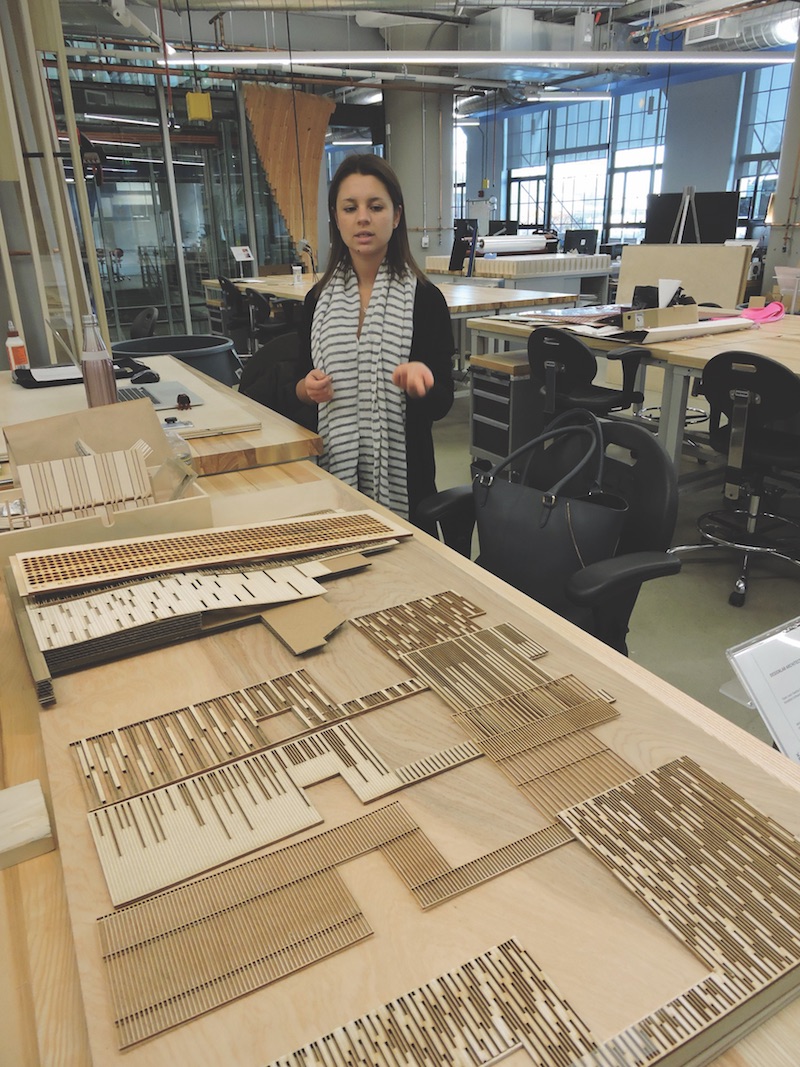 Ewelina Olechowska of Design Lab Architects has been using reclaimed wood to create an exterior screen wall installation for a federal building in Detroit.
Ewelina Olechowska of Design Lab Architects has been using reclaimed wood to create an exterior screen wall installation for a federal building in Detroit.
Tsodokov also uses BUILD to meet with investors and demonstrate MetaComb’s process. “When it comes to investors, it’s all about risk mitigation, and we can go to them and say we have a partner, in Autodesk, that removes some of that risk,” says Tsodokov.
Replication unlikely, but BUILD SPACE will EXPAND
Autodesk benefits from its investment in BUILD Space in several ways, says Rundell. Its software gets exposure to a wide range of companies that funnel through the workshop. Autodesk also gets to see, first hand, how companies use its products. “The decision to create a fabrication shop was a really smart move because it also creates a feedback loop for Autodesk and its users,” says Tsay Jacobs.
Autodesk opened another fabrication workshop, Pier 9 in San Francisco, in September 2013 to explore digital manufacturing. But replicating BUILD Space in other cities is unlikely, says Rundell. “We started this in Boston because that’s where we produce our software.”
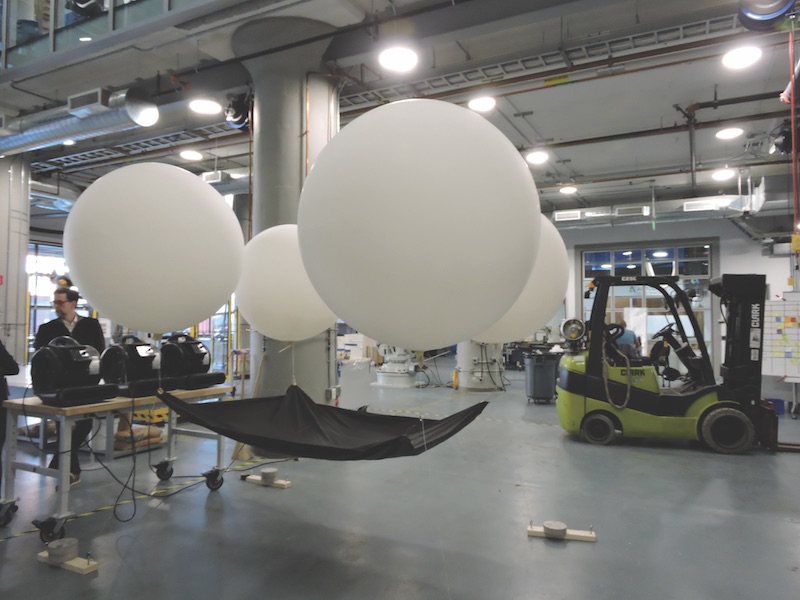 Bechtel used the shop to devise a way to provide shade to construction sites where extreme heat is a constant.
Bechtel used the shop to devise a way to provide shade to construction sites where extreme heat is a constant.
However, Autodesk is expanding BUILD Space’s size and scope. It recently purchased a machine that co-rolls metal framing from steel coils. At P+W’s request, Autodesk is considering the purchase of a robotic Hundegger saw for truss fabrication.
With assistance from Turner Construction, Autodesk is converting 17,000 sf on the third floor of the building to workshop space. And there’s another 34,000 sf on the sixth floor that could be used as a workshop.
Jim Lynch, Vice President of Autodesk’s BIM Product Line Group, stated that BUILD Space could eventually grow to encompass 64,000 sf within 24 months.
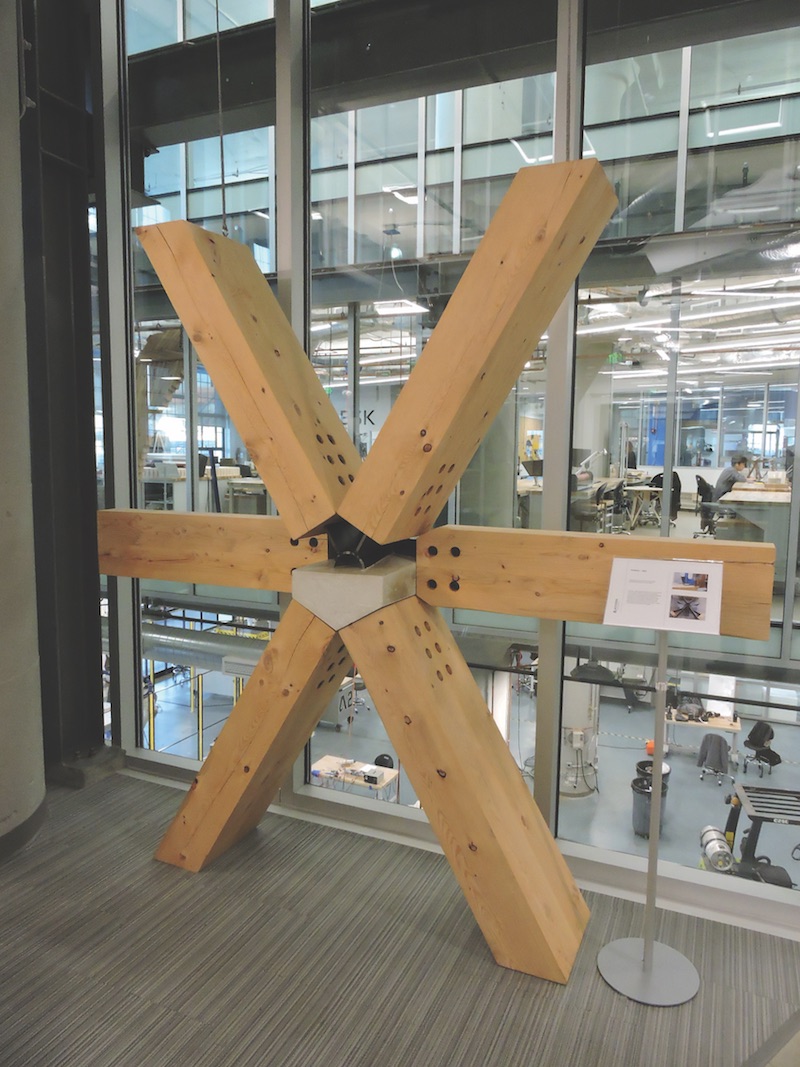 Perkins+Will has sent four teams to BUILD to explore fabrication ideas, including an all-wood truss system. All photos: BD+C.
Perkins+Will has sent four teams to BUILD to explore fabrication ideas, including an all-wood truss system. All photos: BD+C.
Related Stories
Cladding and Facade Systems | Apr 5, 2023
Façade innovation: University of Stuttgart tests a ‘saturated building skin’ for lessening heat islands
HydroSKIN is a façade made with textiles that stores rainwater and uses it later to cool hot building exteriors. The façade innovation consists of an external, multilayered 3D textile that acts as a water collector and evaporator.
Transportation & Parking Facilities | Mar 23, 2023
Amsterdam debuts underwater bicycle parking facility that can accommodate over 4,000 bikes
In February, Amsterdam saw the opening of a new underwater bicycle parking facility. Located in the heart of the city—next to Amsterdam Central Station and under the river IJ (Amsterdam’s waterfront)—the facility, dubbed IJboulevard, has parking spots for over 4,000 bicycles, freeing up space on the street.
AEC Innovators | Mar 3, 2023
Meet BD+C's 2023 AEC Innovators
More than ever, AEC firms and their suppliers are wedding innovation with corporate responsibility. How they are addressing climate change usually gets the headlines. But as the following articles in our AEC Innovators package chronicle, companies are attempting to make an impact as well on the integrity of their supply chains, the reduction of construction waste, and answering calls for more affordable housing and homeless shelters. As often as not, these companies are partnering with municipalities and nonprofit interest groups to help guide their production.
AEC Tech Innovation | Jan 24, 2023
ConTech investment weathered last year’s shaky economy
Investment in construction technology (ConTech) hit $5.38 billion last year (less than a 1% falloff compared to 2021) from 228 deals, according to CEMEX Ventures’ estimates. The firm announced its top 50 construction technology startups of 2023.
Game Changers | Oct 4, 2019
Call to action: BD+C is looking for the industry’s next game-changing projects
Is your firm working on a project that could be the next advance in design, engineering, technology, or construction? If so, send us information about it for possible inclusion in our upcoming “Game Changers” feature.
Game Changers | Jan 17, 2019
The coming bonanza in marijuana facilities
AEC firms are rushing to fill orders for cannabis facilities in the 33 states where the sale of marijuana is now legal.
Game Changers | Jan 16, 2019
In the age of Amazon there's nowhere to go but up
Multistory warehouses could help speed ecommerce delivery in urban centers.
Game Changers | Jan 15, 2019
IPD super teams hit jackpot for clients
Meet the firms achieving double-digit returns using true, shared-risk, multi-party integrated project delivery.
Game Changers | Jan 9, 2019
Developers invest in mega amenities to draw top-notch tenants
As the competition for highly coveted tenants and patrons heats up, developers take the amenities arms race to new extremes.
Game Changers | Jan 17, 2018
Is farming ready to grow up?
Armed with the latest agri-tech and millions in VC funding, vertical farming startups believe they’ve cracked the code on indoor farming.


